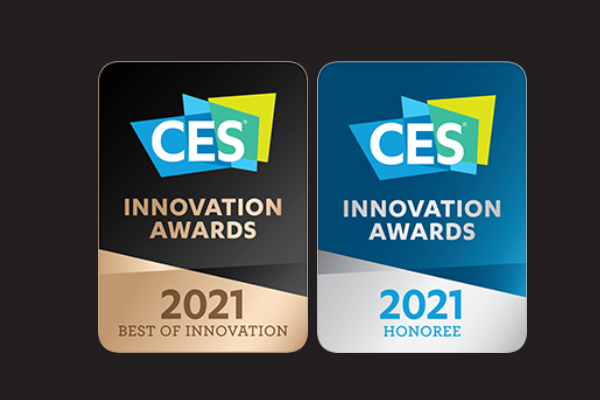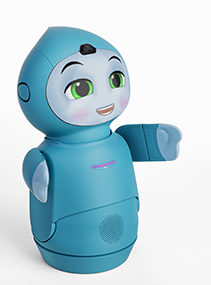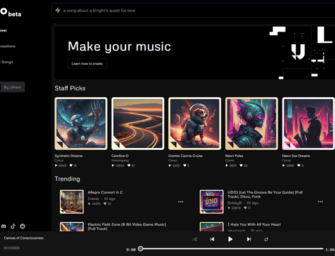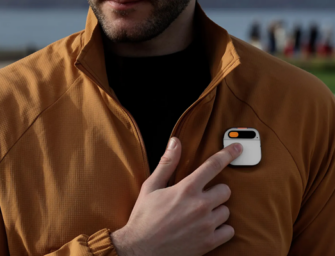The Most Intriguing CES 2021 Innovation Award-Winning Devices Using Voice and AI
 CES kicks off next week in purely virtual form, and the Consumer Technology Association is already showing off the winners of the CES 2021 Innovation Awards. This year’s crop of more than 1,200 nominees ranged across 28 product categories covering nearly every aspect of people’s lives. We examined this year’s winners and picked out some of the most notable examples of voice tech and artificial intelligence among the winners. Our picks include some chosen as Best of Innovation, meaning they ranked the highest in their category, as well as several honorees, who each had to score above a certain minimum for their category to make the cut.
CES kicks off next week in purely virtual form, and the Consumer Technology Association is already showing off the winners of the CES 2021 Innovation Awards. This year’s crop of more than 1,200 nominees ranged across 28 product categories covering nearly every aspect of people’s lives. We examined this year’s winners and picked out some of the most notable examples of voice tech and artificial intelligence among the winners. Our picks include some chosen as Best of Innovation, meaning they ranked the highest in their category, as well as several honorees, who each had to score above a certain minimum for their category to make the cut.
Best of Innovation
LG InstaView ThinQ Refrigerator – LG’s new smart fridge comes with a voice assistant connected to a motor that can open the door on request. The AI connects to sensors in the fridge to detect how well its ice and water dispensers are operating and if it needs a new water filter. It can also leverage the Amazon Dash replenishment service and order filters when needed if the owner gives permission.
U by Moen Smart Faucet – Another kitchen device, U by Moen, provides voice control over a kitchen faucet via a smart home system or smart speaker. The connected mobile app can create presets, a bit like an Alexa routine so that a short voice command would set the flow and temperature of the water to whatever the user wants. Voice commands can also simply start, pause, or stop the flow.
OrCam Read – The OrCam Read brings text-to-speech tech to any printed service. The handheld device comes with a camera and an AI sophisticated enough to read from a book or screen without digitizing the text first. Those with visual impairment or learning disabilities could then hear the information they may not have been able to see or comprehend.
Honorees
Vuzix “Next Generation Smart Glasses” – Vuzix’s new smart glasses are pitched as fusing smartphone and smartwatch abilities into relatively light glasses. The Vuzix smart glasses pair with a smartphone and combine audio responses with visuals tiny LED projectors for each lens to display information visually. The glasses can be controlled via the voice assistant or with touch and gesture controls.
Petpuls – A smart wearable for dogs, the Petpuls collar includes a small device with sensors and artificial intelligence designed to gather data about the dog’s activity and measure their physical and emotional health. The AI translates the data about the dog into one of five emotions for the dog, sharing if the canine is happy, anxious, angry, sad, or relaxed and offering care tips through a related mobile app.
Widex Moment – Widex calls the Moment the first hearing aid to use dual AI engines for real-time adjustments. The hearing aids adapt over time to the wearer, personalizing the sound profile, while the artificial intelligence engines make adjustments in real time. The digital processing is also powerful enough to finish in less than half a millisecond, making the wearer’s responses commensurately more natural.
 Moxie – A robot toy for children, Moxie is designed to play teach kids by playing games with them and give the child something to interact with that isn’t their parents or on a screen. Embodied, moxie’s developer worked with child education and development experts to put together the way Moxie talks and engages with kids. The robot can understand the natural language spoken by a kid or their parents, measuring not only what the child says but the sentiment behind the words through a combination of facial expression, body language, and eye contact.
Moxie – A robot toy for children, Moxie is designed to play teach kids by playing games with them and give the child something to interact with that isn’t their parents or on a screen. Embodied, moxie’s developer worked with child education and development experts to put together the way Moxie talks and engages with kids. The robot can understand the natural language spoken by a kid or their parents, measuring not only what the child says but the sentiment behind the words through a combination of facial expression, body language, and eye contact.
SoundID – Like Widex, SoundID is designed to personalize audio experiences with AI, but not just for hearing aids. The platform can be used to make a unique ideal sound profile on any headphones by using AI and audio analytics to improve how the headphones are calibrated, what the wearer is able to hear, and what they want the sound to be like. The platform is free to consumers, though the company licenses the software to other companies.
Integrated Spatial Assistant Console – The console applies voice AI technology to a conference call platform. It identifies speakers by their voice, image on the screen, and connected databases, transcribing the meeting and creating minutes with notes of who is speaking. The system can translate the transcript into 125 languages and can be customized using IBM Watson to including industry-specific words and terms.
Timekettle M2 Translator Earbuds – These earbuds offer both simultaneous translation and consecutive translation to handle different contexts where multiple languages are spoken. The earbuds are also usable for more prosaic purposes like making calls and listening to music via Bluetooth connections to a smartphone.
Follow @voicebotai Follow @erichschwartz
Lenovo Debuts New Amazon Alexa ‘Show Mode’ That Turns Computers into Smart Displays








